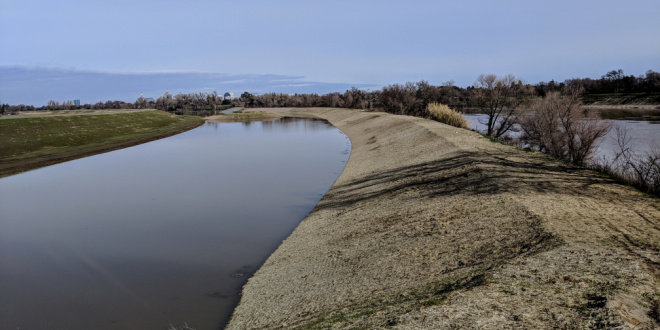As part of a new long-term drought plan for California’s Central Valley, the Department of the Interior announced an $81 million investment from President Biden’s Investing in America agenda for water conservation and drought resilience south of the Sacramento-San Joaquin Delta in California’s San Joaquin Valley.
For several decades, the Central Valley Project has served the communities and economies of central California. The project, extending 400 miles, is a complex, multi-purpose network of dams, reservoirs, canals, hydroelectric powerplants and other facilities, which reduces flood risk for the Central Valley and supplies domestic and industrial water supplies across the region. The project supports about 2.5 million people a year, providing supplies to 250 contractors in 29 of California’s 58 counties.
“Water resources in the San Joaquin Valley support food production and agricultural output across California, deliver water to urban centers in the greater Sacramento and San Francisco Bay areas, and support fish and wildlife throughout the region. When we invest in the San Joaquin Valley, we invest in people, in wildlife, in economies and in our future,” said Acting Deputy Secretary Laura Daniel-Davis. “These resources from President Biden’s Investing in America agenda, paired with historic collaboration amongst water agencies in the region, will help build resilient communities and protect our water supplies for people and the natural environment.”
The Memorandum of Understanding between the Bureau of Reclamation and the Central Valley Project South-of-Delta contractors – including the San Luis & Delta-Mendota Water Authority, San Joaquin River Exchange Contractors Water Authority and Friant Water Authority – identifies a framework, long-term drought plan, and a 2024 Pilot Program, including a “drought pool,” to build drought resiliency in the region.
“Access to clean and reliable water is essential for feeding families, growing crops, sustaining wildlife and the environment and powering agricultural businesses. It also creates incredible potential for economic opportunity and job creation,” said Acting Principal Deputy Assistant Secretary for Water and Science Sarah Krakoff. “This new drought plan will help provide critical water supplies to refuges and cities, save permanent crops from being fallowed in drought years, and keep water in the San Joaquin River in the worst of drought years.”
Central Valley Project water deliveries south of the Sacramento-San Joaquin Delta are dependent on Reclamation’s ability to pump water from the Delta, San Luis Reservoir water storage, and conveyance through Central Valley Project canals. Seasonal shifts in water availability and worsening droughts impact operational flexibility and increase regulatory uncertainty.
Through the new drought plan, Central Valley Project South-of-Delta contractors will share a portion of their wet water year supplies for use in driest years. This will help provide critical water supplies to refuges and cities, save permanent crops from being fallowed in drought years, and keep water in the San Joaquin River in the worst of drought years.
The plan provides major benefits both to farmers and to salmon in the San Joaquin, California’s second longest river. The river restoration program has junior water rights and is vulnerable to severe water cutbacks in the driest of years. The creation of a “drought pool” of additional water supplies in these driest of years will help ensure that there is water for the salmon when they most need it.
To realize the benefits of the drought plan, the contractors, in collaboration with Reclamation, have identified a number of critical infrastructure projects that are key to successful implementation. The $81 million investment from the Inflation Reduction Act will help fund a majority of the projects. The funding will also help to establish additional aquifer storage, recharge and recovery wells, re-operations of existing surface storage, and conveyance capacity expansion.
 California Water News Daily Your Source For Water News in California
California Water News Daily Your Source For Water News in California


